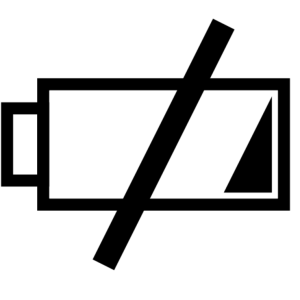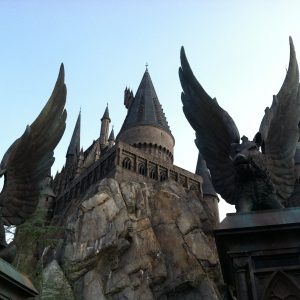Want to experience the greatest in board studying? Check out our interactive question bank podcast- the FIRST of its kind here: emrapidbombs.supercast.com
Author: Blake Briggs, MD
Peer Reviewer: Mary Claire O’Brien, MD
Introduction
Subarachnoid hemorrhage (SAH) is a terrifying, relatively frequent cause of intracranial bleeding and has a significant degree of morbidity and mortality. SAH makes up ~10% of all strokes. SAH can be aneurysmal (more common) or non-aneurysmal. Average age of aneurysmal rupture causing SAH is ~50 years old.
Aneurysm: protrusion from an artery that is prone to rupture
-Saccular (berry): thin-walled tunica media that protrudes from an artery. Defected elastic lamina.
-Fusiform: circumferential dilatation of the entire section of a particular artery.
Non-aneurysmal causes: trauma, AVM, vasculitis, amyloid, bleeding pathology, sympathomimetic abuse.
Biggest risks for aneurysm formation and SAH: smoking > HTN > family history (specific traits, Ehlers-Danlos, PCKD)
Accelerate your learning with our EM Question Bank Podcast
- Rapid learning
- Interactive questions and answers
- new episodes every week
- Become a valuable supporter
As disturbing as they are to patients, most cerebral aneurysms do not rupture. Their lifetime prevalence is ~5% in the US alone. About 85% of them are located in the anterior circulation, mainly on the Circle of Willis. 20-30% have multiple aneurysms.
Sometimes unruptured aneurysms can cause headaches. These headaches often mimic SAH.
There is no major consensus on which aneurysms need to be managed surgically. It is agreed that aneurysms >7 mm grow faster and have a higher rate of rupture (e.g. 5-year rupture rates for 7-12 mm risk was 2.5%; 13-24 mm, 14.5%).
We prefer to stay out of this debate (for obvious reasons). However, here’s a summary where there is decent support for intervention: symptomatic unruptured aneurysms of all sizes, asymptomatic aneurysms >7-10 mm, remaining aneurysms of all sizes in those with SAH.
Triggers of rupture: not always identifiable. Some can occur during sleep. Often, some form of exertional event tied with many other confounding variables including consuming caffeine, sexual intercourse, competitive athletics. Emotional events alone have not been shown to be solo triggers.
Rupture of vessel —> blood enters CSF rapidly —> rapid increase in ICP with symptoms of intense headache
Presentation
Sudden, severe headache = 97% of cases.
Unilateral headache = 30% of patients.
Nausea and vomiting = 77% of patients.
Loss of consciousness = about 50% of patients.
Seizures = ~10% of patients. Arguably the most concerning symptom if present early on.
Sudden death = ~10-15% of patients. These rarely reach the hospital.
EKG can show ischemic changes such as ST depression, QT prolongation, and deep T wave inversions. Of course, these are not very specific or sensitive for SAH and can be seen in countless systemic ischemic conditions.
The Ottawa Subarachnoid Hemorrhage Rule may be used in neurologically intact patients presenting with acute, nontraumatic headaches that reach max intensity within one hour. The clinical decision rule is 100% sensitive, with a specificity of 15%. Clearly this is a one-sided rule, and caution should be noted when a positive rule is obtained as it does not always warrant a full workup depending on the clinical context.
Diagnosis
First test is always CT head without contrast.
Blood is found in the subarachnoid space 92% of the time if scan is <24 hours. If the CT head scan is done in <6 hours, the sensitivity is virtually 100%. Therefore, if a patient’s symptoms truly began <6 hours prior and the CT scan is negative, SAH workup is complete and no further diagnostic workup is warranted.
The critical caveats we must mention: 1) the CT scan is reviewed by expert radiologists, 2) the CT scanner is a 7th generation (latest) model.
Lumbar puncture: should be performed if there is negative head CT and patient presentation is >6 hours with a concerning story. Sensitivity is 100% and NPV 100% with a specificity of 65%. Classic findings from the LP:
-elevated opening pressure. Not always reliably present.
-RBC count >2000 in CSF.
-elevated RBC count that does not decrease from tubes 1à4. If the RBC does diminish, this still does not mean it was a “traumatic tap”! Always have a high index of suspicion!
-Xanthochromia (yellow tint from Hgb breakdown). This is the most specific finding and in the setting of a severe headache is virtually diagnostic of SAH. If unsure, compare the vial of CSF to a vial of tap water against a white background. Xanthochromia is rarely found <2 hours after symptom onset.
The absence of RBCs in the final LP tube and absence of xanthochromia >2 hours after symptom onset rules out SAH with a sensitivity of 100%.
Xanthochromia: aside from SAH, it can be seen in hyperbilirubinemia >10 mg/dL, and severely traumatic taps where there is typically >100k RBCs (oh my word!).
CTA and MRA can both equally detect aneurysms ~3-5mm or larger. New, multidetector CTA (e.g. 64-slice) has improved to >97% sensitive/specific for SAH. In many institutions CTA has been seen as a reasonable alternative to LP (the main drawbacks of CTA are cost and radiation). LP is thousands of dollars cheaper however can be painful, time-consuming, and not without risk. Post-LP headaches are a rare but substantial source of patient suffering.
While there might be some debate between CTA and LP, this can be avoided in some populations with the application of the Ottawa Subarachnoid Hemorrhage Rule. The rule is validated and has been found to be 100% sensitive in ruling out SAH in patients aged 14-39 years old within 14 days of symptom onset for new onset severe atraumatic headache. As you can imagine, the criteria are very strict. So, what are the cutoffs in this rule? Well, we don’t want you to memorize it because you do not need to, and you can always look it up online while on shift, but we need to mention it at least once.
Age ≥ 40, neck pain or stiffness, witnessed loss of consciousness, onset during exertion, thunderclap headache (onset with max intensity in 1 second), limited neck flexion on exam.
If any one of these variables are present, then you cannot rule out SAH and you need to consider further testing like CT. If none of these signs or symptoms is identified, sensitivity for exclusion of subarachnoid hemorrhage is 100%. However, specificity is only 15%, so the tool should not be used to definitively diagnose subarachnoid hemorrhage.
Management
Admission to neurosurgical service with critical care monitoring. ~35% of these patients have worsening neuro functioning after admission.
Discuss intubation for those GCS <8, and/or need for better critical care monitoring in the setting of elevated ICP, hemodynamic instability, and/or need for heavy sedation/paralysis.
Digital subtraction angiography (DSA): gold standard for high resolution detection of intracranial aneurysm as the cause of the SAH. If negative, it is often repeated due to a substantial number of false negatives.
In most settings, CTA has virtually replaced conventional angiography in many institutions as initial “aneurysm-mapping” test due to its speed, lack of invasiveness, and cost.
Definitive management: surgical clipping and endovascular coiling. These procedures are outside the scope of this review.
High yield Neuro Critical Care:
Please see our handout on ICP management on our website for more details on general neurological critical care!
Consider ventriculostomy for direct ICP monitoring if enlarged ventricles, consider craniectomy in select patients.
BP control: guidelines are not clear. Goal of SBP <160 is reasonable. Labetalol, nicardipine, clevidipine are preferred. Benefit of lowering BP might be offset by risk of infarction (CPP = MAP – ICP). i.e. if ICP is high then the only variable maintaining perfusion is MAP. Patient’s consciousness might be a helpful marker: alert and oriented = SBP ~140. Patient impaired = SBP ~160.
Seizure management: widely debated with no consensus. Higher risk patients should have a lower threshold to starting. There is no good evidence to support prophylaxis in patients post-clipping/coiling if they previously had no seizures and had a good initial grade.
Complications
Overall, a high mortality rate with average being 51%! The majority die within 30 days.
-Rebleeding: highest risk within the first 24 hours.
-Hydrocephalus: caused by obstruction of CSF by blood products. Early and late complication. Consider drain placement.
-Vasospasm: Delayed cerebral ischemia. Basically, a form of inflammatory complication where lysis of clots and endothelial damage cause smooth muscle contraction. Associated with poor neurologic decline and high mortality.
-Presentation: neurologic decline/LOC/AMS/focal deficits vs clinical silence. Peaks at 7 days post-hemorrhage. No sooner than 3 days.
-Prevention: all patients should receive nimodipine and statins (improves outcomes but no direct evidence actually shows it affects the incidence or symptoms of vasospasm).
All patients should undergo TCD (transcranial doppler) to monitor for vasospasm. DSA is more accurate but one must go to the OR.
-Hyponatremia: likely due to hypothalamic injury. Target euvolemia and normal electrolyte balance. Isotonic saline is the crystalloid of choice (this is the only time we support the use of normal saline for IVF!).
Bottom line: any change in clinical status warrants a stat CT head scan!
Prognosis
The most important prognostic factors for good outcome are as follows: consciousness and neurologic exam on initial evaluation, younger age, the amount of blood on CT.
Long term complications for survivors include neurocognitive disability, epilepsy, and lasting focal deficits.
Unfortunately, those with SAH have a small risk of recurrence of SAH, despite successful repair.
Family members have a 5-fold risk of SAH compared to the rest of the population.
References
1. Labovitz DL, Halim AX, Brent B, et al. Subarachnoid hemorrhage incidence among Whites, Blacks and Caribbean Hispanics: the Northern Manhattan Study. Neuroepidemiology 2006; 26:147.
2. Shea AM, Reed SD, Curtis LH, et al. Characteristics of nontraumatic subarachnoid hemorrhage in the United States in 2003. Neurosurgery 2007; 61:1131.
3. Mayberg MR, Batjer HH, Dacey R, et al. Guidelines for the management of aneurysmal subarachnoid hemorrhage. A statement for healthcare professionals from a special writing group of the Stroke Council, American Heart Association. Stroke 1994; 25:2315.
4. Vlak MH, Rinkel GJ, Greebe P, et al. Lifetime risks for aneurysmal subarachnoid haemorrhage: multivariable risk stratification. J Neurol Neurosurg Psychiatry 2013; 84:619.
5. Korja M, Silventoinen K, McCarron P, et al. Genetic epidemiology of spontaneous subarachnoid hemorrhage: Nordic Twin Study. Stroke 2010; 41:2458.
6. Yoon BW, Bae HJ, Hong KS, et al. Phenylpropanolamine contained in cold remedies and risk of hemorrhagic stroke. Neurology 2007; 68:146.
7. Levine SR, Brust JC, Futrell N, et al. A comparative study of the cerebrovascular complications of cocaine: alkaloidal versus hydrochloride–a review. Neurology 1991; 41:1173.
8. Vlak MH, Rinkel GJ, Greebe P, et al. Trigger factors and their attributable risk for rupture of intracranial aneurysms: a case-crossover study. Stroke 2011; 42:1878.
9. Shiue I, Arima H, Anderson CS, ACROSS Group. Life events and risk of subarachnoid hemorrhage: the australasian cooperative research on subarachnoid hemorrhage study (ACROSS). Stroke 2010; 41:1304.
10. Penrose RJ. Life events before subarachnoid haemorrhage. J Psychosom Res 1972; 16:329.
11. Gorelick PB, Hier DB, Caplan LR, Langenberg P. Headache in acute cerebrovascular disease. Neurology 1986; 36:1445.
12. Fontanarosa PB. Recognition of subarachnoid hemorrhage. Ann Emerg Med 1989; 18:1199.
13. Schievink WI. Intracranial aneurysms. N Engl J Med 1997; 336:28.
14. Butzkueven H, Evans AH, Pitman A, et al. Onset seizures independently predict poor outcome after subarachnoid hemorrhage. Neurology 2000; 55:1315.
15. Linn FH, Wijdicks EF, van der Graaf Y, et al. Prospective study of sentinel headache in aneurysmal subarachnoid haemorrhage. Lancet 1994; 344:590.
16. Morgenstern LB, Luna-Gonzales H, Huber JC Jr, et al. Worst headache and subarachnoid hemorrhage: prospective, modern computed tomography and spinal fluid analysis. Ann Emerg Med 1998; 32:297.
17. Perry JJ, Spacek A, Forbes M, et al. Is the combination of negative computed tomography result and negative lumbar puncture result sufficient to rule out subarachnoid hemorrhage? Ann Emerg Med 2008; 51:707.
18. Vermeulen M, van Gijn J. The diagnosis of subarachnoid haemorrhage. J Neurol Neurosurg Psychiatry 1990; 53:365.
19. Perry JJ, Stiell IG, Sivilotti ML, et al. Clinical decision rules to rule out subarachnoid hemorrhage for acute headache. JAMA 2013; 310:1248.
20. Kassell NF, Torner JC, Haley EC Jr, et al. The International Cooperative Study on the Timing of Aneurysm Surgery. Part 1: Overall management results. J Neurosurg 1990; 73:18.
21. Connolly ES Jr, Rabinstein AA, Carhuapoma JR, et al. Guidelines for the management of aneurysmal subarachnoid hemorrhage: a guideline for healthcare professionals from the American Heart Association/american Stroke Association. Stroke 2012; 43:1711.
22. Leblanc R. The minor leak preceding subarachnoid hemorrhage. J Neurosurg 1987; 66:35.
23. Mark DG, Hung YY, Offerman SR, et al. Nontraumatic subarachnoid hemorrhage in the setting of negative cranial computed tomography results: external validation of a clinical and imaging prediction rule. Ann Emerg Med 2013; 62:1.
24. Heasley DC, Mohamed MA, Yousem DM. Clearing of red blood cells in lumbar puncture does not rule out ruptured aneurysm in patients with suspected subarachnoid hemorrhage but negative head CT findings. AJNR Am J Neuroradiol 2005; 26:820.
25. Wijdicks EF, Kallmes DF, Manno EM, et al. Subarachnoid hemorrhage: neurointensive care and aneurysm repair. Mayo Clin Proc 2005; 80:550.
26. Wallace AN, Dines JN, Zipfel GJ, Derdeyn CP. Yield of catheter angiography after computed tomography negative, lumbar puncture positive subarachnoid hemorrhage [corrected]. Stroke 2013; 44:1729.
27. UK National External Quality Assessment Scheme for Immunochemistry Working Group. National guidelines for analysis of cerebrospinal fluid for bilirubin in suspected subarachnoid haemorrhage. Ann Clin Biochem 2003; 40:481.
28. Li MH, Cheng YS, Li YD, et al. Large-cohort comparison between three-dimensional time-of-flight magnetic resonance and rotational digital subtraction angiographies in intracranial aneurysm detection. Stroke 2009; 40:3127.
29. Menke J, Larsen J, Kallenberg K. Diagnosing cerebral aneurysms by computed tomographic angiography: meta-analysis. Ann Neurol 2011; 69:646.
30. Velthuis BK, Van Leeuwen MS, Witkamp TD, et al. Computerized tomography angiography in patients with subarachnoid hemorrhage: from aneurysm detection to treatment without conventional angiography. J Neurosurg 1999; 91:761.
31. Winn HR, Richardson AE, Jane JA. The long-term prognosis in untreated cerebral aneurysms: I. The incidence of late hemorrhage in cerebral aneurysm: a 10-year evaluation of 364 patients. Ann Neurol 1977; 1:358.
32. Mayberg MR, Batjer HH, Dacey R, et al. Guidelines for the management of aneurysmal subarachnoid hemorrhage. A statement for healthcare professionals from a special writing group of the Stroke Council, American Heart Association. Stroke 1994; 25:2315.
33. Rabinstein AA, Weigand S, Atkinson JL, Wijdicks EF. Patterns of cerebral infarction in aneurysmal subarachnoid hemorrhage. Stroke 2005; 36:992.
34. Schmidt JM, Wartenberg KE, Fernandez A, et al. Frequency and clinical impact of asymptomatic cerebral infarction due to vasospasm after subarachnoid hemorrhage. J Neurosurg 2008; 109:1052.
35. Wilkins RH. Aneurysm rupture during angiography: does acute vasospasm occur? Surg Neurol 1976; 5:299.
36. Graff-Radford NR, Torner J, Adams HP Jr, Kassell NF. Factors associated with hydrocephalus after subarachnoid hemorrhage. A report of the Cooperative Aneurysm Study. Arch Neurol 1989; 46:744.
37. Douglas MR, Daniel M, Lagord C, et al. High CSF transforming growth factor beta levels after subarachnoid haemorrhage: association with chronic communicating hydrocephalus. J Neurol Neurosurg Psychiatry 2009; 80:545.
38. Nornes H, Magnaes B. Intracranial pressure in patients with ruptured saccular aneurysm. J Neurosurg 1972; 36:537.
39. Junttila E, Vaara M, Koskenkari J, et al. Repolarization abnormalities in patients with subarachnoid and intracerebral hemorrhage: predisposing factors and association with outcome. Anesth Analg 2013; 116:190.
40. Schievink WI. Intracranial aneurysms. N Engl J Med 1997; 336:28.
41. Austin G, Fisher S, Dickson D, et al. The significance of the extracellular matrix in intracranial aneurysms. Ann Clin Lab Sci 1993; 23:97.
42. Patel RL, Richards P, Chambers DJ, Venn G. Infective endocarditis complicated by ruptured cerebral mycotic aneurysm. J R Soc Med 1991; 84:746.
43. Raps EC, Rogers JD, Galetta SL, et al. The clinical spectrum of unruptured intracranial aneurysms. Arch Neurol 1993; 50:265.
44. Friedman JA, Piepgras DG, Pichelmann MA, et al. Small cerebral aneurysms presenting with symptoms other than rupture. Neurology 2001; 57:1212.
45. Kotowski M, Naggara O, Darsaut TE, et al. Safety and occlusion rates of surgical treatment of unruptured intracranial aneurysms: a systematic review and meta-analysis of the literature from 1990 to 2011. J Neurol Neurosurg Psychiatry 2013; 84:42.
46. Alshekhlee A, Mehta S, Edgell RC, et al. Hospital mortality and complications of electively clipped or coiled unruptured intracranial aneurysm. Stroke 2010; 41:1471.
47. Bederson JB, Awad IA, Wiebers DO, et al. Recommendations for the management of patients with unruptured intracranial aneurysms: A statement for healthcare professionals from the Stroke Council of the American Heart Association. Circulation 2000; 102:2300.
48. Schmidt JM, Ko SB, Helbok R, et al. Cerebral perfusion pressure thresholds for brain tissue hypoxia and metabolic crisis after poor-grade subarachnoid hemorrhage. Stroke 2011; 42:1351.
49. Wijdicks EF, Vermeulen M, Murray GD, et al. The effects of treating hypertension following aneurysmal subarachnoid hemorrhage. Clin Neurol Neurosurg 1990; 92:111.
50. Naval NS, Stevens RD, Mirski MA, Bhardwaj A. Controversies in the management of aneurysmal subarachnoid hemorrhage. Crit Care Med 2006; 34:511.
51. Marigold R, Günther A, Tiwari D, Kwan J. Antiepileptic drugs for the primary and secondary prevention of seizures after subarachnoid haemorrhage. Cochrane Database Syst Rev 2013; :CD008710.
52. Barker FG 2nd, Ogilvy CS. Efficacy of prophylactic nimodipine for delayed ischemic deficit after subarachnoid hemorrhage: a metaanalysis. J Neurosurg 1996; 84:405.
53. Suarez-Rivera O. Acute hydrocephalus after subarachnoid hemorrhage. Surg Neurol 1998; 49:563.
54. Woo CH, Rao VA, Sheridan W, Flint AC. Performance characteristics of a sliding-scale hypertonic saline infusion protocol for the treatment of acute neurologic hyponatremia. Neurocrit Care 2009; 11:228.



